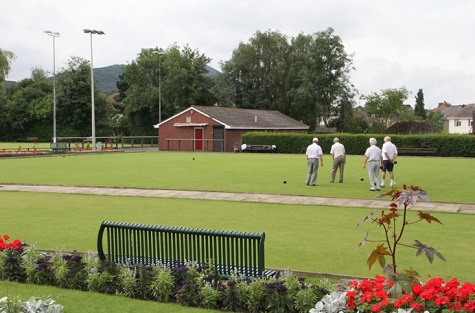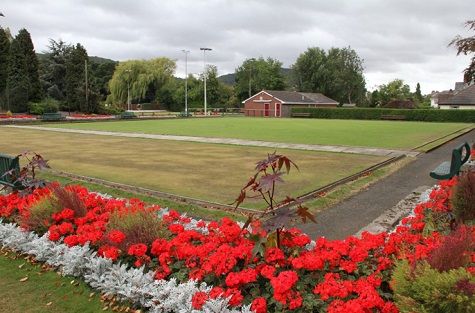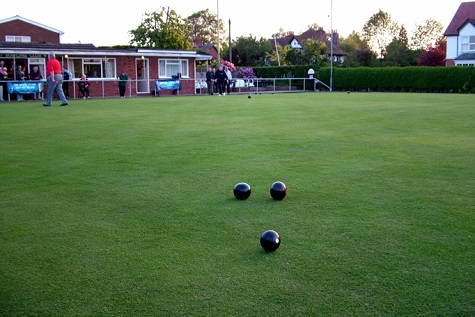I read in a Yorkshire newspaper that a number of council bowling greens are facing closure.
Is this evidence of the beginning of a cull of sports facilities, brought about by the current economic climate being driven by the Covid pandemic? The report stated that Bowling greens in Wharfedale and Aireborough could close as part of a new cost-cutting drive by Leeds City Council. The authority has apparently announced a consultation into halving the number of public outdoor bowling greens it manages, in order to make annual savings of about £83,000.
The article quotes local councilors, who have condemned the proposed move as misguided and short-sighted. Councillor Sandy Lay (Lib Dem, Otley & Yeadon) says, “Leeds do not understand the value of these facilities.
“They regard them as the preserve of pensioners from leafy suburbs and totally ignore the physical and mental benefits of playing what is in effect a sport.”

I agree with the statement that Leeds Council are perhaps ignoring the real value of what these bowling greens can bring to the community. If they were marketed and supported correctly they could increase membership and become more widely used.
I do, however, understand their predicament, particularly knowing that most council sports facilities are often heavily subsidised and have been for years. With the world changing and council budgets in major decline many councils are offloading public assets to save money and resources.

For many years the state of bowling club memberships has generally been in decline, with many clubs struggling to keep afloat, relying heavily on volunteers to maintain their greens and keep costs to the minimum.
This can be coupled with the fact that many clubs now have fewer than 80 members, who perhaps only pay a token annual membership fee that rarely covers the cost of running the club. Over time will have led to the closure of many fine clubs.
It really is a sad decline. Many local authorities up and down the country have in recent years had to reduce their maintenance commitments to sport facilities and where possible, have leased out the facilities to clubs to take on the responsibilities of maintaining the grounds themselves.

For me, one of the main problems is a lack of support from the sport’s governing body (Bowls England) and the British Crown Green Bowling Association (BCGBA) who for many years where happy to take affiliation fees from the clubs and were not really spending it on promoting the values that these clubs bring to the community - while at the same time, allowing this overall decline of the sport.
Having spoken to a number of bowlers and clubs, they have never been happy with the way their sport has been run. However, I have heard from one prominent bowler, Andy Caines, who set up a website to help promote the sport and talk about the issues it’s facing. In one video he talks about the work of the BCGBA and their proposals for a new membership fee for their 70,000 members.
Based on those figures, this could potentially bring in around £350,000, based on a £5 pound annual membership fee - a substantial amount, that would hopefully help the future of the sport. Both organisations need to listen to their members and find a way to modernise and better promote bowls and introduce it to a new generation of bowlers.
Once you lose site of the importance these facilities and indeed see the closure of greens, replacing a typical bowling green in today’s money would cost in excess of £150,000. Add to that floodlights and clubhouse facilities to make it viable, you could be looking at the best part of £300,000 plus.
A lot of money. Therefore we must try to find ways to retain the clubs we have and make them more viable and sustainable. We need to promote the benefits of the sport, particularly in terms of keeping people active and competitive. We need to introduce the sport to youngsters and invite schools to bring the sport into its sporting curriculum. We also must make the facility a focus of the community, especially if the club has good clubhouse facilities that attract other users, thus building up the income generation potential of the club. This could help ensure the club’s future.
The annual maintenance of the green itself has always been a bone of contention. There is a cost for its upkeep to a given playing standard, and in today’s money if you have to pay a professional greenkeeper or contractor to do the work, it is likely going to cost anything between £8,000-£12,000 depending on the level of input required. However, many clubs are maintaining their greens for much less, relying on volunteers and keeping costs down to around £6,000-£8,000 per green. We then must consider the other costs; rent, electricity and building maintenance. So all in all, there may be an annual cost of around £20,000-plus to run a club.
Therefore, a club with 100 members would have to charge at least £200 annual membership fees to cover the overall annual running costs. For me, the biggest challenge for bowls clubs is how to get members to pay this level of membership and not the measly £50 that most contribute.
The sport of bowls is one of our oldest sports. The oldest known bowling green, in Southampton, dates at least to 1299 - although other greens claim to be older. Henry VIII, himself a bowler, in 1511 banned the sport among the lower classes and levied a fee of 100 pounds on any private bowling green to ensure that only the wealthy could play.
Let us not see this sport decline any further and where possible promote, encourage and look at the benefits that it brings in improving the wellbeing and fitness of our older generation. I also hope that Leeds Council have a rethink on their proposals and try where possible to retain these valuable assets.